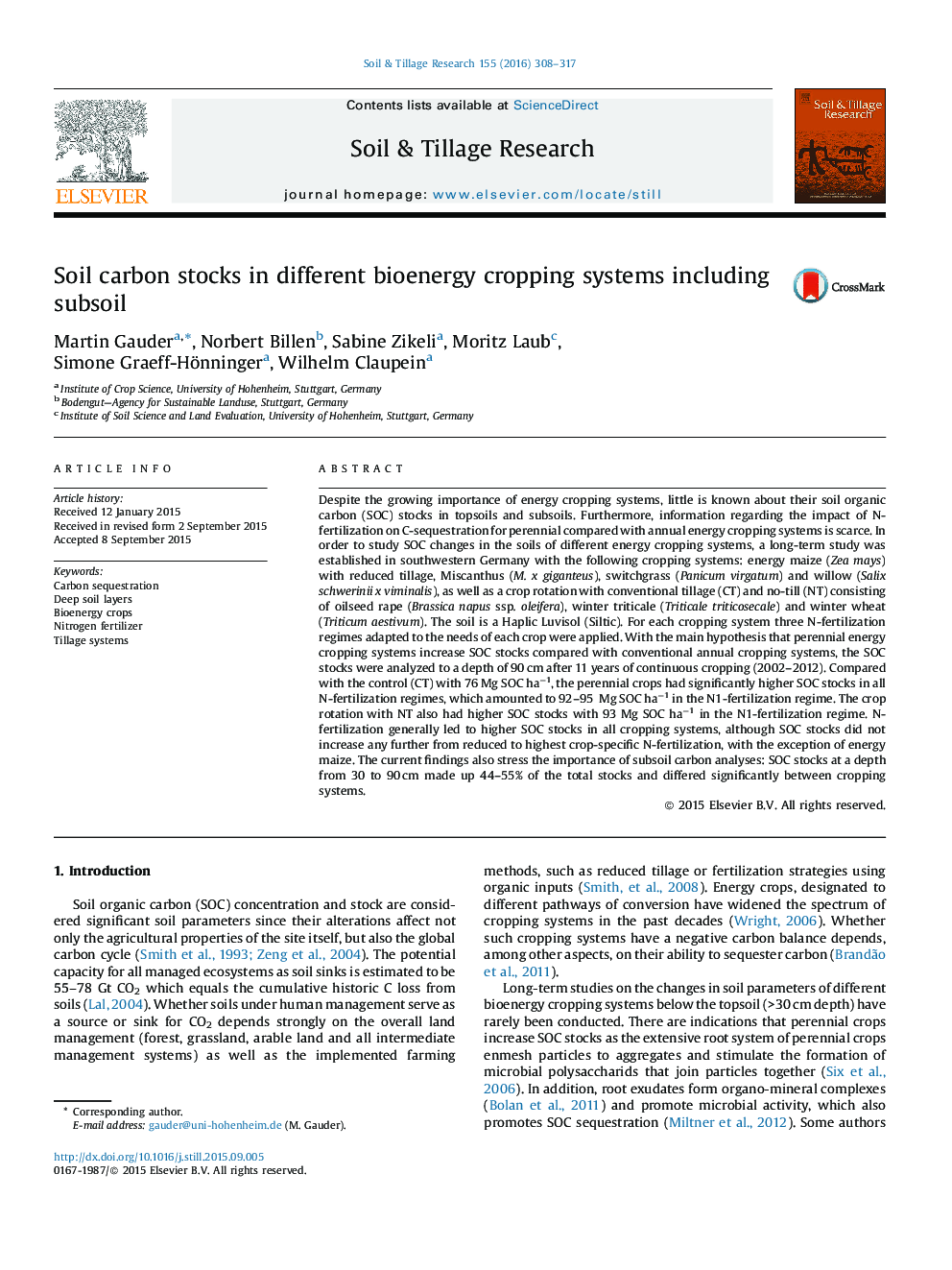| کد مقاله | کد نشریه | سال انتشار | مقاله انگلیسی | نسخه تمام متن |
|---|---|---|---|---|
| 305487 | 513031 | 2016 | 10 صفحه PDF | دانلود رایگان |
• Perennial crops had higher SOC stocks than conventional tilled crops after 11 years.
• Differences of SOC stocks were also significant in the subsoil (90 cm depth).
• Nitrogen fertilization significantly increased SOC stocks.
• No-till led to significantly increased SOC stocks compared with conventional tillage.
• No-till annual cropping and perennial energy cropping led to similar SOC stocks.
Despite the growing importance of energy cropping systems, little is known about their soil organic carbon (SOC) stocks in topsoils and subsoils. Furthermore, information regarding the impact of N-fertilization on C-sequestration for perennial compared with annual energy cropping systems is scarce. In order to study SOC changes in the soils of different energy cropping systems, a long-term study was established in southwestern Germany with the following cropping systems: energy maize (Zea mays) with reduced tillage, Miscanthus (M. x giganteus), switchgrass (Panicum virgatum) and willow (Salix schwerinii x viminalis), as well as a crop rotation with conventional tillage (CT) and no-till (NT) consisting of oilseed rape (Brassica napus ssp. oleifera), winter triticale (Triticale triticosecale) and winter wheat (Triticum aestivum). The soil is a Haplic Luvisol (Siltic). For each cropping system three N-fertilization regimes adapted to the needs of each crop were applied. With the main hypothesis that perennial energy cropping systems increase SOC stocks compared with conventional annual cropping systems, the SOC stocks were analyzed to a depth of 90 cm after 11 years of continuous cropping (2002–2012). Compared with the control (CT) with 76 Mg SOC ha−1, the perennial crops had significantly higher SOC stocks in all N-fertilization regimes, which amounted to 92–95 Mg SOC ha−1 in the N1-fertilization regime. The crop rotation with NT also had higher SOC stocks with 93 Mg SOC ha−1 in the N1-fertilization regime. N-fertilization generally led to higher SOC stocks in all cropping systems, although SOC stocks did not increase any further from reduced to highest crop-specific N-fertilization, with the exception of energy maize. The current findings also stress the importance of subsoil carbon analyses: SOC stocks at a depth from 30 to 90 cm made up 44–55% of the total stocks and differed significantly between cropping systems.
Journal: Soil and Tillage Research - Volume 155, January 2016, Pages 308–317
